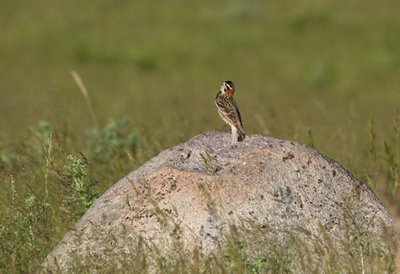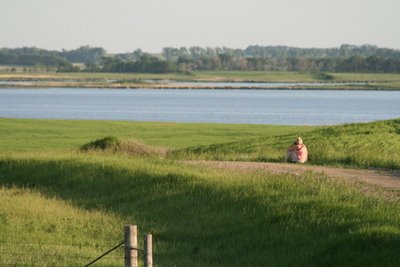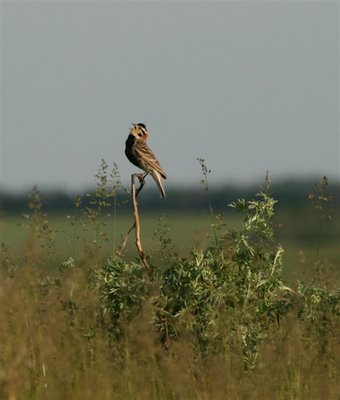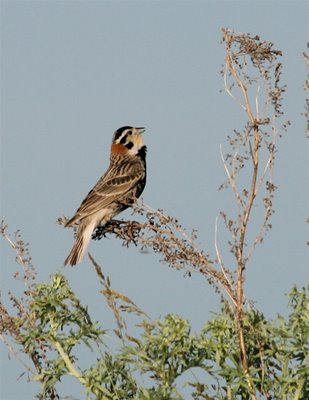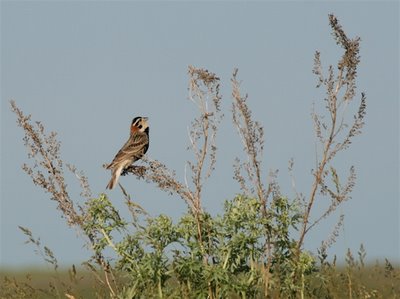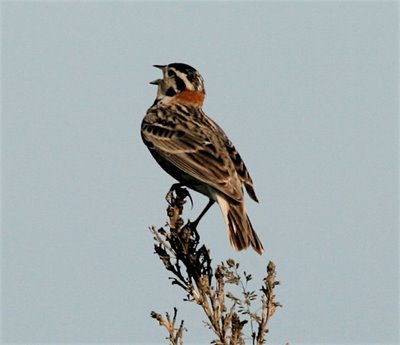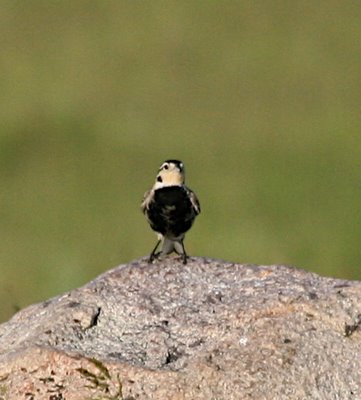Grassland Raptors of Guyana
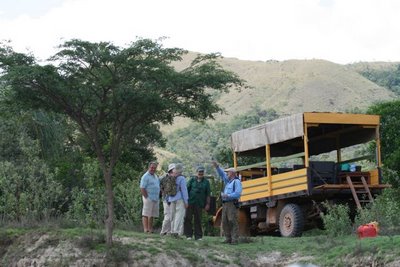 Every June, we go to the prairie pothole region of central North Dakota. I'm amazed anew each June as I am reminded how much life can be packed into a grassland. Maybe it's just that you can see the life of a grassland so much more easily than that of a forest. There is a whole lot of life in savannas.
Every June, we go to the prairie pothole region of central North Dakota. I'm amazed anew each June as I am reminded how much life can be packed into a grassland. Maybe it's just that you can see the life of a grassland so much more easily than that of a forest. There is a whole lot of life in savannas.Our conveyance along Ginep Road near Rockview Lodge was a huge crawler diesel that went about ten to twenty mph along the dusty road. We were loaded into the open back, which afforded good, albeit dusty and diesely, birding ops. Time and time again in the tropics I find myself in vehicles like this, where one must bang vigorously on the cabin roof to get the attention of the driver when a good bird or animal hoves into view. Because everything is of interest, the Science Chimp's impulse is to bang nearly constantly on the roof, so I know enough to stay away from the cab.
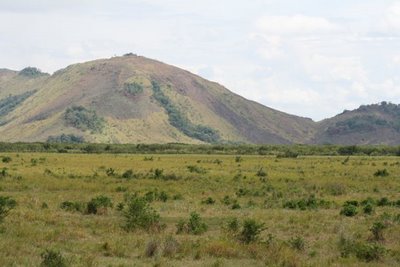
How different the savanna was from forest! This is natural savanna, formed where the soil is too shallow to support tree life. It was very odd to see a troupe of brown capuchin monkeys making their way from one treed hillock to the next. I really felt I was in Africa
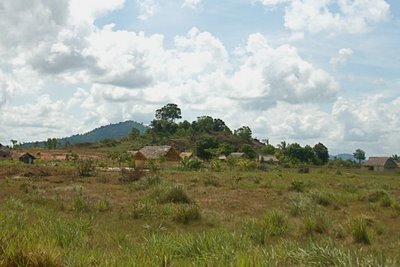 --again and again I believed that, and had to remind myself that this was South America.
--again and again I believed that, and had to remind myself that this was South America.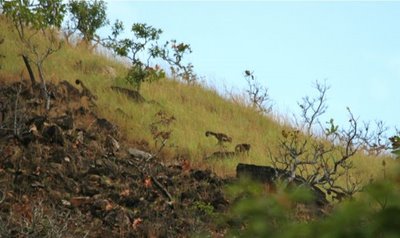 You can see the monkeys' curled tails as they bound down the hillside. Lovely creatures!
You can see the monkeys' curled tails as they bound down the hillside. Lovely creatures!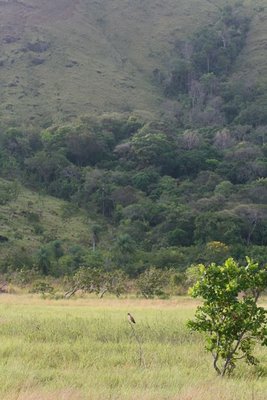 Here is a savanna hawk, to scale in its immense landscape.
Here is a savanna hawk, to scale in its immense landscape.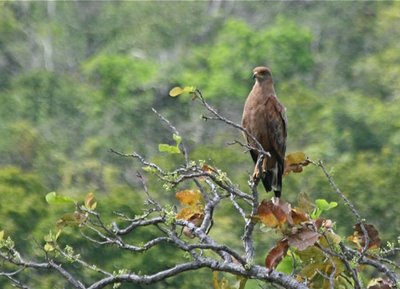 And here, a close-up (though not nearly close enough for me) of this long-legged beauty, Buteogallus meridionalis. What a gorgeous beast, long winged and big-bodied. It's after snakes and lizards mostly, and it loves a good grass fire, which sends its prey leaping and scuttling right into its strong yellow toes and stiletto talons. What you can't quite make out in this photo is the fine vermiculate barring on its neck and breast. Breathtaking.
And here, a close-up (though not nearly close enough for me) of this long-legged beauty, Buteogallus meridionalis. What a gorgeous beast, long winged and big-bodied. It's after snakes and lizards mostly, and it loves a good grass fire, which sends its prey leaping and scuttling right into its strong yellow toes and stiletto talons. What you can't quite make out in this photo is the fine vermiculate barring on its neck and breast. Breathtaking.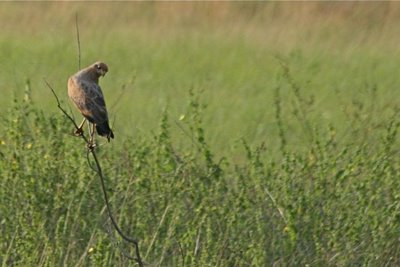
Another savanna hawk's eye gleams as it scans the scrub for lizards.
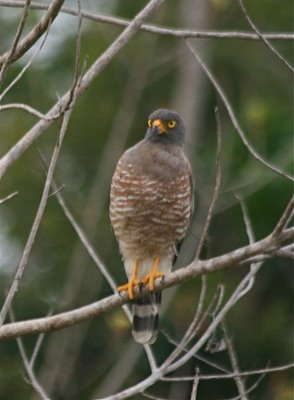 The roadside hawk (Buteo magnirostris) is a common little thing that might as well be called a riverside hawk. I always get a kick out of its No. 2 pencil-orange cere and feet.
The roadside hawk (Buteo magnirostris) is a common little thing that might as well be called a riverside hawk. I always get a kick out of its No. 2 pencil-orange cere and feet. 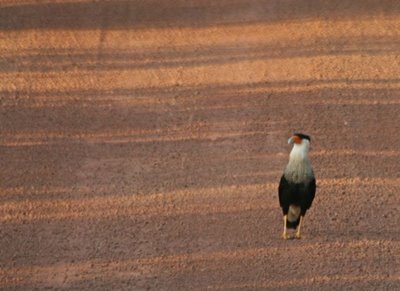 Crested caracaras (Polyborus plancus) always take my breath away. They are simply spectacular, and when they fly there huge white patches in the primaries flash. There's something a bit curassow-like about them as they stalk around, but they're raptors all right, and they're always looking for something dead, dying or disabled to exploit. Their feet are better for walking than grasping, so they feed on small prey from insects to small mammals, and exploit carrion as well. Polyborus means, loosely, "multiple gluttonies."
Crested caracaras (Polyborus plancus) always take my breath away. They are simply spectacular, and when they fly there huge white patches in the primaries flash. There's something a bit curassow-like about them as they stalk around, but they're raptors all right, and they're always looking for something dead, dying or disabled to exploit. Their feet are better for walking than grasping, so they feed on small prey from insects to small mammals, and exploit carrion as well. Polyborus means, loosely, "multiple gluttonies."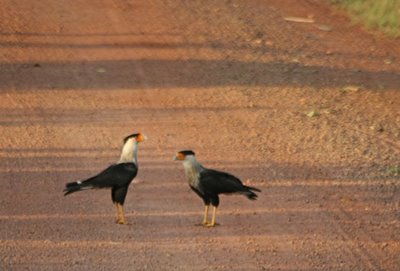 I like the name Mexican Eagle for this bird--this pair reminded me of the Mexican coat of arms.
I like the name Mexican Eagle for this bird--this pair reminded me of the Mexican coat of arms.Oh! What are you, most beautiful thing? I know I know you...I've seen you before, with your snowy breast and chestnut shoulders. Your color scheme is the bomb.
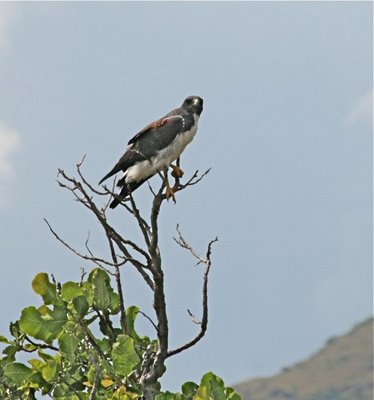
Let me guess. Hmmm.
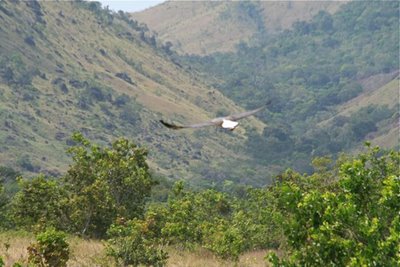
White-tailed hawk? (Buteo albicaudatus)
Yes. A raptor with a good, good name, and a voracious predator of everything from insects to rabbits. All told, I was very glad not to be a mouse on the Guyanan savanna.
Labels: grassland birds, Guyana South America, raptors of Guyana, roadside hawk, savanna hawk, white-tailed hawk

